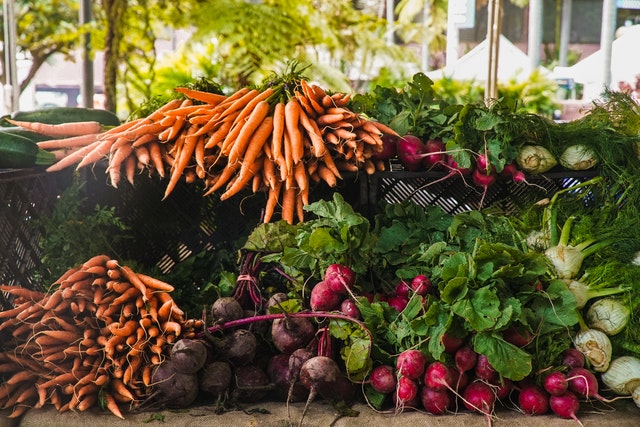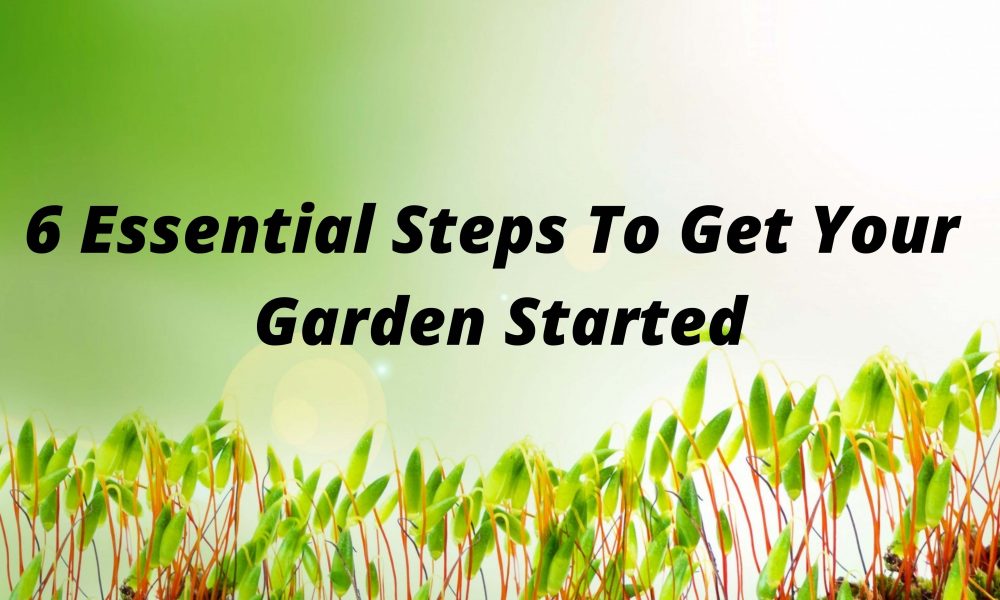6 Essential Steps To Getting Your Vegetable Garden Started Successfully.
These 6 important steps, will get your garden started, on solid ground.
You will also start “Fusing” with nature, and discover the true beauty and fascination that we need to start truly appreciating.
For example
If you start by just growing a couple of tomato plants, you will save some cash on shop bought veg. While also discovering the true taste of home grown tomatoes. From personal experience I can assure you that the taste is exceptionally delicious.
To let you in on a little secret, in our home, shop-bought tomatoes are lovingly(NOT) referred to as “Water Bottles”.
believe me they taste very much like water, when compared to home grown tomatoes.
As an added bonus, gardening is considered exercise, and from personal experience it is also an amazing de-stress-ant.
SO LETS DIG RIGHT IN (Pun intended).
Start With A Manageable Space.
If you are new to gardening, then it is highly recommended that you , start off with a small space.
It’s far better to be thrilled by the success that a small garden will give you, than to be dis-heartened by the obstacles that a large garden will present.
Please realise that you can/will increase the size of your garden over time. But you should rather add on 1 extra bed, once your first one is perfect, and then add an extra bed.
Plant It, Perfect It, Repeat.
It’s also very important that you follow the instructions that are here, as I can tell you from personal experience that trying to do your own thing while not knowing where to start, often ends in disaster. I may or may not have started in that manner😄, lets just say it did not work…… If you don’t you’ll find out just how difficult it is to garden without “recipes” to follow.
You’ll be able to determine over time how much you need to grow to feed your family.
An excellent size to start with is a 4×4 Sq ft, garden bed.
I would suggest that you choose 4 different types of vegetables.
And plant 1 Sq ft every second day (or every week) of each vegetable, so that way you “stagger” your crops.
This will mean that you will always have fresh veggies
Growing veggies in containers/pots is also a good way to start.
If you decide to grow in pots or containers, you won’t need to maintain a garden bed. But the biggest downside to pots, is that it is extremely difficult to grow large quantities easily.
Only Grow What You Know Will Be Eaten.
What do you like to eat, or what does you your family enjoy to eat?
This will tell you what you should plant in your garden.
Choose 4 of the most popular veggies, for me it would be, Lettuce, Tomatoes, Kale, Sweet peppers.
And one basil plant (you only need one basil plant as it lasts a very long time).
Some plants varieties are designed for certain areas, but if you possibly can i would suggest that you purchase HEIRLOOM Seeds from a reputable company.
You may pay a bit more than normal seeds, but believe me it is entirely worth it. check out this article for more info on heirloom seeds HERE.

Productivity.
Think about how much you and also your family will eat as well whether you will freeze or hand out excess produce.
After that you will be able to decide how many plants, of each you should plant.
Vegetables like tomatoes, peppers, as well as squash keep supplying throughout the season.
So you may not require many plants to supply your demands.
Some vegetables, such as carrots, radishes, lettuce, cabbage as well as corn, can be gathered only once and then need to be replaced.
Choosing the location for you garden.
No matter what you decide to plant there are 2 key points to choosing the correct location for your garden.
Light, and Sunlight.
As much sunlight as possible is a must, for like all plants, veggies require the sunlight to perform photosynthesis.
If your yard provides partial shade, plant veggies and natural herbs that can handle medium to full shade.
If your site gets at least 4 hours of direct sunlight a day, root vegetables like radishes, beets, and carrots might also work.
Or if you have a bright outdoor patio, switch to container planting. In this way you can place sun-loving veggies and also such as tomatoes, cucumbers, beans, rosemary, dill, and basil, where they’ll grow well..
Read this post for a more in depth explanation.
Water Access/ Watering
The closer your garden is to a water supply the better.
You’ll need to water your new plants/seedlings almost daily when you first start your garden. So it is rather important that you can easily water your garden.
Once the plants are well established, it is better to give them a long and deep soak, every second or third day, than a light sprinkle each day.
For ease of maintenance I would suggest that you invest in an automatic watering system, along with a sprinkler system.
Choose Your Garden Type.
Choose your type of vegetable garden, the format.
There are two main types of garden formats, Row, or Intensive.
Row Gardening.
Placing the rows approximately 18 in(45cm) apart, means that you will have plenty of space between rows.
This approach is useful for large areas where space is not a problem, as it allows your mechanical tools to be manoeuvred around the garden easier.
The downside, is that in smaller yards where space is a bit short then this format is extremely inefficient, and not necessarily good looking.
Pro Garden Tip: Tall plants normally do very well on the north/south side of the garden. This includes tomatoes, corn, beans, and many other plants that are tall.
Intensive Gardening
The square-foot approach, in which you subdivide a raised 4 × 4-foot garden bed into 1-foot
squares making use of a physical grid (such as lattice strips or string).
- It looks absolutely magnificent. A highly sophisticated garden.
- It is simple and easy to maintain. Low maintenance required.
- Uses ~80% less water, than row gardening.
- ~200-300% more space efficient, than Row gardening
- And is just in general a absolute must for your garden.
Ever since I discovered this format, it has been the only format of garden that I use.
You’ll need 8 cubic feet of reasonable garden soil to fill such a bed with 6-inch-high sides.
The planting formula is extremely simple:
- 1 extra-large plant per 1 × 1-foot square.
- 4 big plants per 1 × 1-foot square.
- 9 medium plants per 1 × 1-foot square.
- 16 little plants per 1 × 1-foot square.
Mix and match these at will.
Use Good Quality Soil For Your Garden.
For the best harvest, your vegetable garden requires the very best soil you can offer it.
Rich healthy soil, is something that is considered “black gold”. To the gardener the only way to test the soil is to run it through your fingers, feel it, squeeze it, even smell it if you want.
Get a trowels worth of your soil, put it in your hands, and feel it.
Does it feel very sandy? Then there is excessive sand.
Is it slightly/very powdery? Then there is excessive silt.
Is it slightly or very sticky when damp? Then there is excessive clay.
The mix of these three types of soil in your garden, and when in specific proportions, creates the perfect garden soil.
The quality of the soil affects the drainage of the soil, and the nutrient quantity.
You want soil that is dark, crumbly, and feels rich.
Fortunately, no matter what the type of soil may be, all soils can be boosted over time by including raw material into it.
Take sandy soils, for instance. They’re composed of large soil particles, so water and also nutrients run
through gaps relatively easily.
Including organic material (usually garden compost) to sandy soil fills out the spaces in between sand particles, which will then keep both moisture and also nutrients in the soil so that the plants can use them.
Clay soils are the exact opposite. They are made of extremely small, densely soil particles that hold moisture, but however don’t allow much air room for plant roots.
Compost helps separate those little clay fragments so water can drain away much more easily and also plant
roots can obtain the needed oxygen.
Send a sample to a state-certified soil-testing lab for analysis if it’s not obvious which type of soil you have.
Soil Preparation.
To prepare your soil for planting, spread out the compost, on top of the soil, and mix it in.
Avoid stepping on the newly tilled soil or you’ll compact it, as well as undo all your hard work.
Then rake the area smooth and water it well.
Allow the soil to rest for 2 days, to allow the nutrients to distribute themselves properly throughout the soil.
Pro Garden Suggestion: Raised beds are an excellent way to grow veggies if your soil is not so great, as you can line the bases of the frames with a couple of layers of newspapers and cardboard, and then fill up with soil.
Pests And Diseases.
Some weeds need special attention, but generally if you stick to these guidelines, you will be able to maintain a weed free garden.
Stop Weeds In Their Tracks.
Weeds compete with your vegetables for light, water, and nutrients, so it’s important to
keep them to a minimum.
A mulch of clean straw, compost, or plastic can keep weeds at bay around bigger plants like tomatoes.
Use a hoe to dissuade any kind of weed plants that do turn up.
